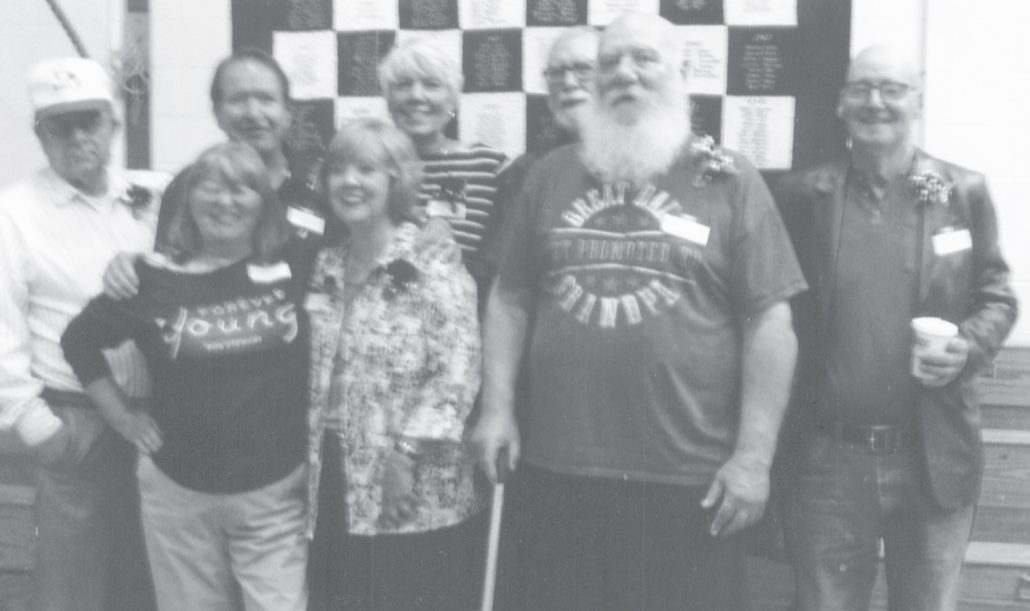SCORES & OUTDOORS: Atlantic salmon restoration steady but slow despite many efforts
 SCORES & OUTDOORS
SCORES & OUTDOORS
by Roland D. Hallee
I’ve been reading a lot lately about the fate of the mighty Atlantic salmon.
Atlantic salmon, Salmo salar, have long been the target of recreational and commercial fishing, and this, as well as habitat destruction, has reduced their numbers significantly. The species is the subject of conservation efforts in several countries.
Several populations of Atlantic salmon are in serious decline in Maine. The Endangered Species Act currently places 11 Maine rivers on the list: the Kennebec, Androscoggin, Penobscot, Sheepscot, Ducktrap, Cove Brook, Pleasant, Narraguagus, Machias, East Machias and Dennys. The Penobscot is the anchor river for Atlantic salmon populations in the U.S. Returns in 2008 have been around 2,000, more than double the 2007 return of 940.
 However, on the Kenduskeag River, in Bangor, according to Richard Dill, a biologist for the Maine Department of Marine Resources Bureau of Sea-Run Fisheries and Habitat, over recent years, the return of salmon to the river has been particularly low. In 2012, 624 salmon returned to the fish trap at the Veazie Dam. In 2013, just 372 salmon were counted at the facility.
However, on the Kenduskeag River, in Bangor, according to Richard Dill, a biologist for the Maine Department of Marine Resources Bureau of Sea-Run Fisheries and Habitat, over recent years, the return of salmon to the river has been particularly low. In 2012, 624 salmon returned to the fish trap at the Veazie Dam. In 2013, just 372 salmon were counted at the facility.
There has been some success thus far with populations growing in the Penobscot and Connecticut rivers. In November 2015, salmon nests were observed in the Farmington River, a tributary of the Connecticut River, where Atlantic salmon had not been seen spawning since probably the Revolutionary War.
Atlantic salmon were once abundant throughout the North Atlantic. European fishermen gillnetted the salmon in rivers using hand-made nets for at least several centuries. Wood and stone weirs along streams and ponds were used for millennia to harvest salmon in the rivers of Maine and New England. Human activities have heavilty damaged salmon populations across their range. The major impacts were from overfishing and habitat change, and the new threat from competitive farmed fish.
The first laws regarding Atlantic salmon were started nearly 800 years ago. Edward I instituted a penalty for collecting salmon during certain times of the year. His son, Edward II continued the legislation.
Atlantic salmon fishing is illegal in Maine. Anyone who accidentally catches one is required to release the fish alive and uninjured immediately. The fishing rule, listed in the law book under an S-33 code, also requires that “at no time should an Atlantic salmon be removed from the water.”
The North Atlantic Salmon Conservation Organization (NASCO) is an international council made up of Canada, the European Union, Iceland, Norway, the Russian Federation and the United States. Established in 1983, it helps protect Atlantic salmon stocks, through the cooperation between nations. They work, hand-in-hand, to restore habitat and promote conservation of the salmon.
The Army Corps of Engineers reports that Project SHARE, of Eastport, is seeking a permit from the Corps to conduct work in waters of the U.S. in conjunction with an Atlantic salmon enhancement project in China (Maine), the Narraguagus River and the Barrows Stream, in Crawford.
The application proposes to place fill/structures below the ordinary high water line of the West Branch of the Sheepscot River, in China, along with the other two sites, in conjunction with an Atlantic salmon rearing habitat enhancement project. The fill/structures consist of Post Assisted Log Structures (PALS) and Large Woody Debris. Eighty-eight PALS will be placed in the West Branch of the Sheepscot River to enhance 6,275 feet of river.
The work may impact Essential Fish Habitat for Atlantic salmon. This habitat consists of stream bottom composed of mixed sand, gravel, cobble and boulders. Long-term impact to this species is expected to be minimal with appropriate erosion control measures, in stream work windows and other best management practices. The Corps has primarily determined that the site-specific adverse effect will be minimal.
Much is being done to restore the Atlantic salmon populations in the North Atlantic region, but much more needs to be done.
Next week, see what Kathleen McKeoghain, of AlterNet, has to say about Atlantic salmon populations.




 by Marilyn Rogers-Bull & Percy
by Marilyn Rogers-Bull & Percy SCORES & OUTDOORS
SCORES & OUTDOORS A total of 66,050 any-deer permits will be issued in 22 of the state’s 29 wildlife management districts. This is an increase from last year when there were 45,755 permits available to hunters. The permit allocation is: 16,517 for landowners; 16,517 for juniors; and 1,453 for Superpack holders and 31,563 for all other hunters.
A total of 66,050 any-deer permits will be issued in 22 of the state’s 29 wildlife management districts. This is an increase from last year when there were 45,755 permits available to hunters. The permit allocation is: 16,517 for landowners; 16,517 for juniors; and 1,453 for Superpack holders and 31,563 for all other hunters. by Peter Cates
by Peter Cates


 by Gary Kennedy
by Gary Kennedy ERIC’S TECH TALK
ERIC’S TECH TALK